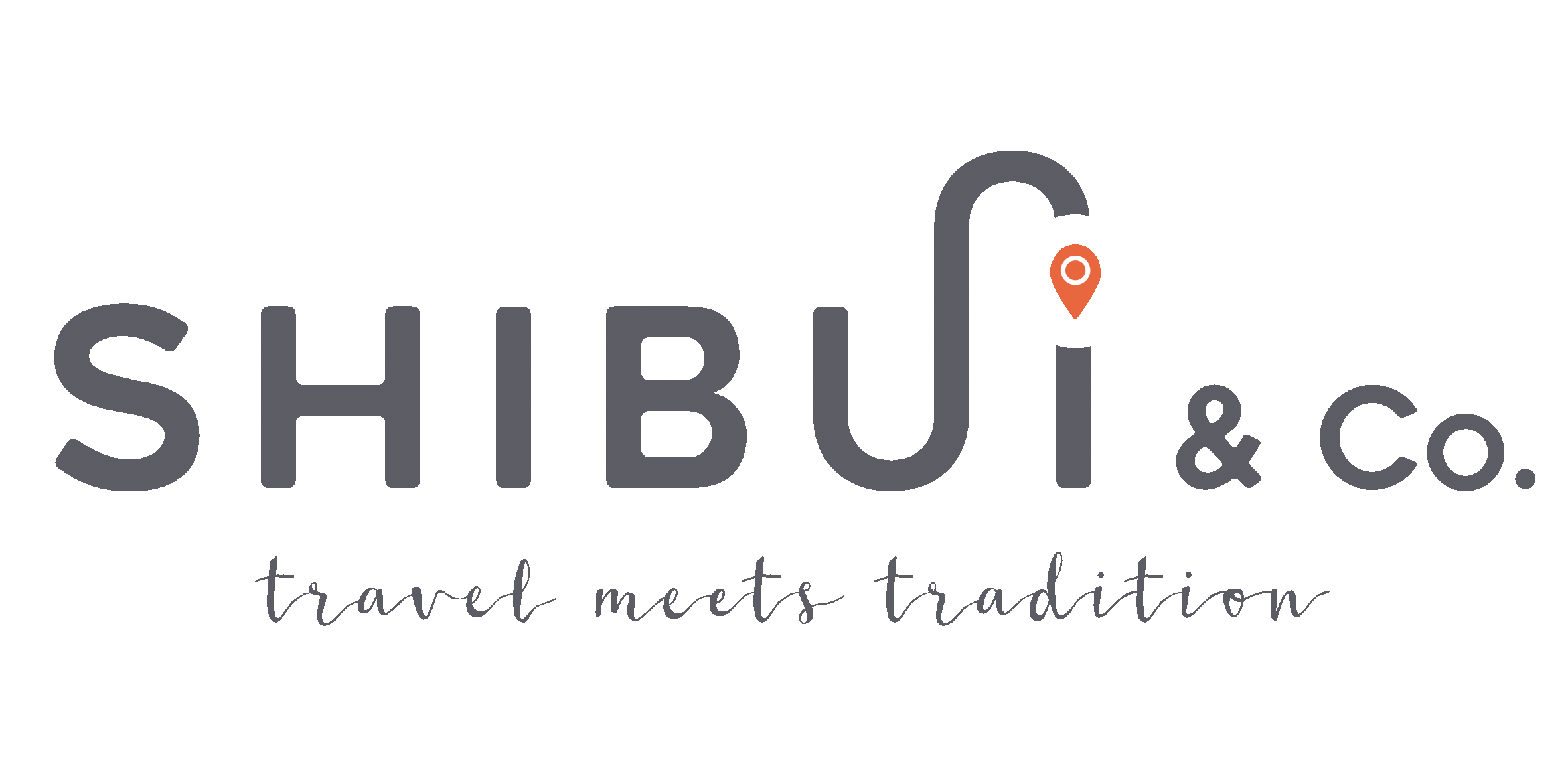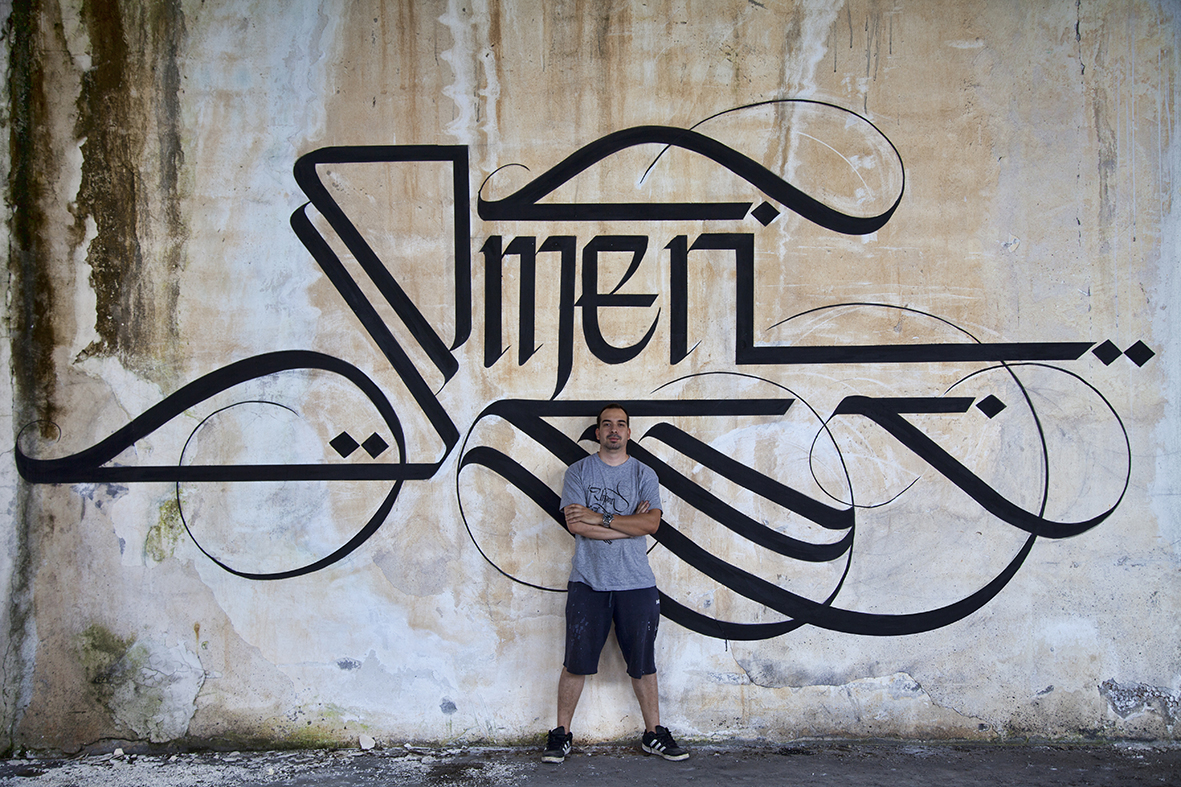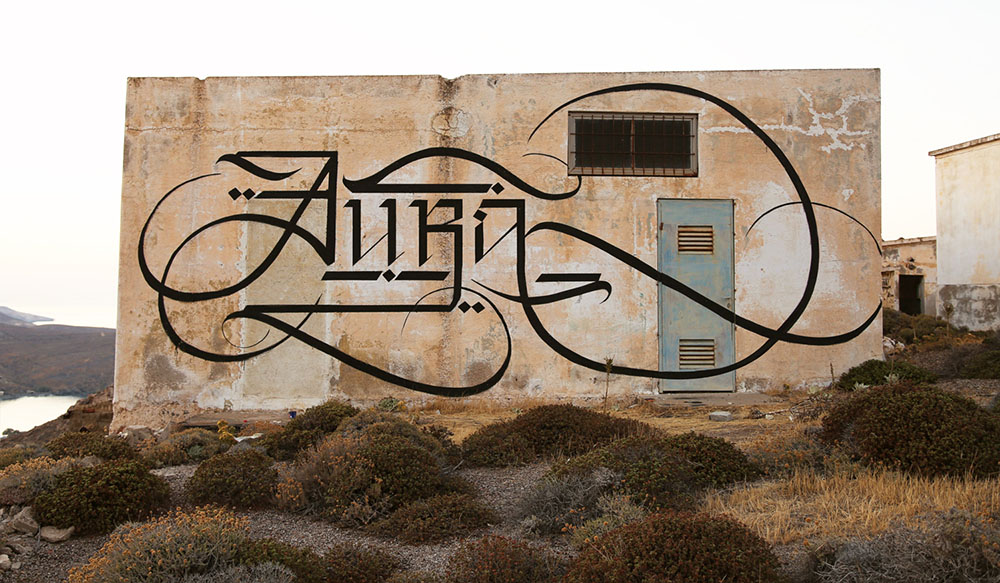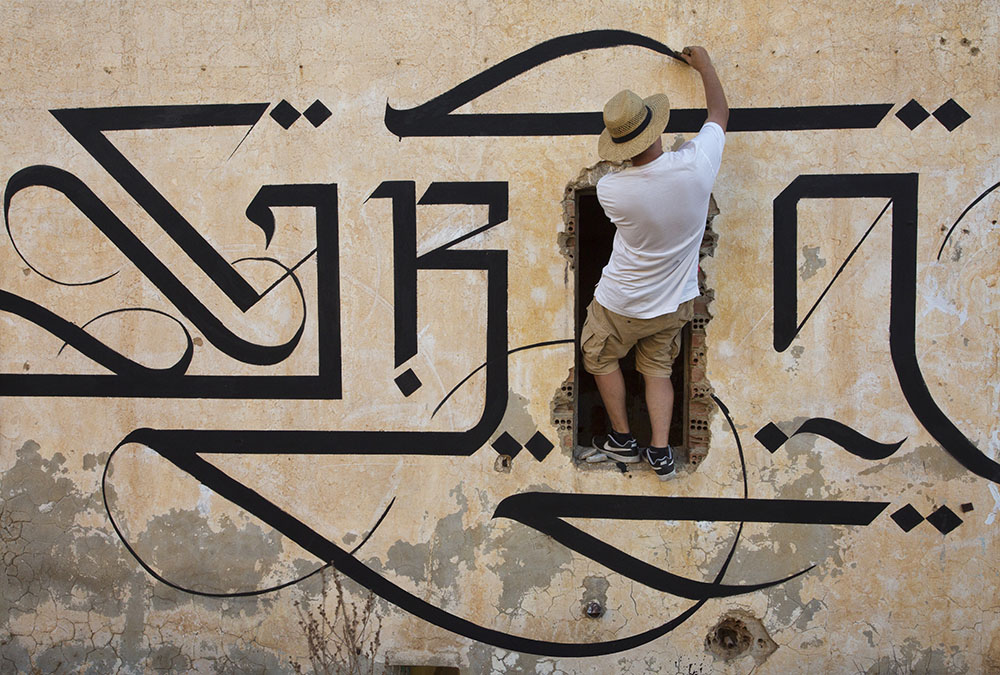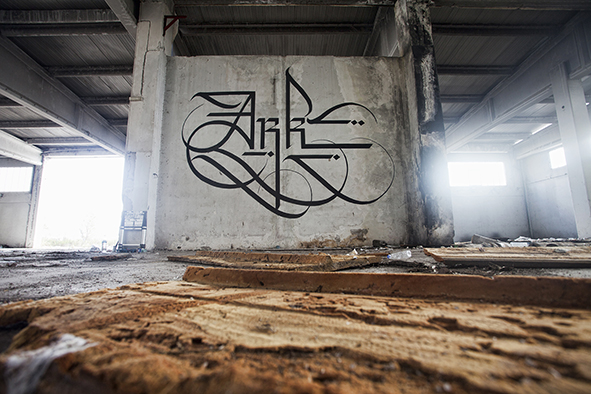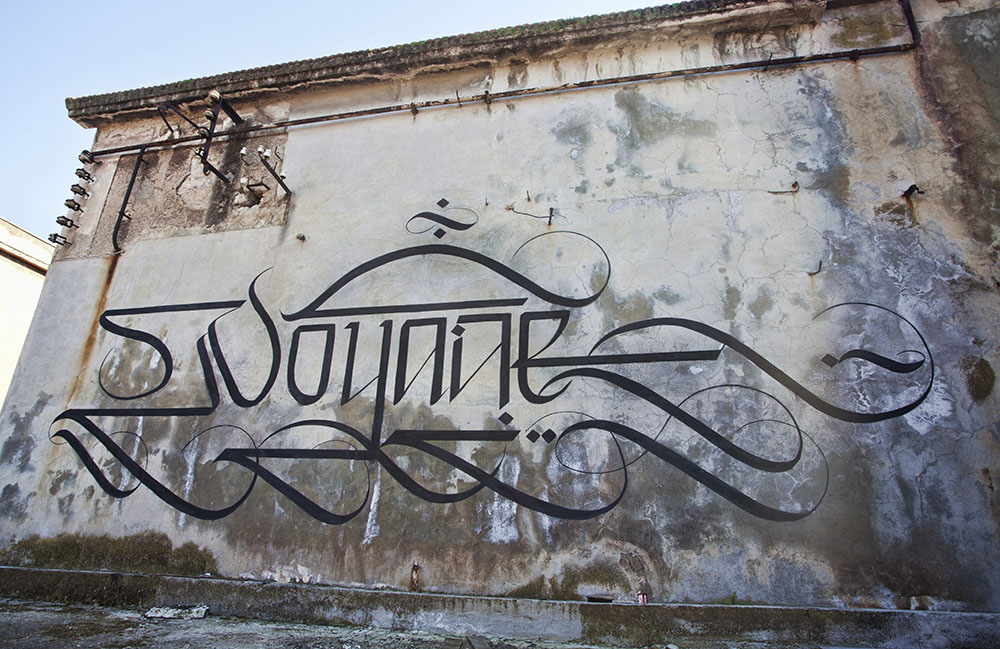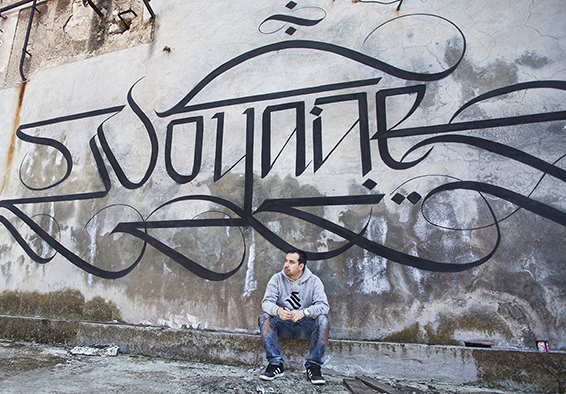Simon Silaidis: Calligraphy in Greece
BRUSH SCRIPT
SIMON SILAIDIS IS A UNIQUE CALLIGRAPHY ARTIST, TAKING THE TRADITIONALLY PEN AND PAPER ART FORM TO OPEN LANDSCAPES.
HIS BEAUTIFUL FLOWING WORKS OF ART ADORN ABANDONED BUILDINGS IN A WAY WHICH CREATES HARMONY BETWEEN THE NATURAL ENVIRONMENT, ARTWORK AND THE VIEWER.
CURATOR KARINA EASTWAY | INTERVIEW WITH SIMON SILAIDIS | PHOTOGRAPHY CONTRIBUTED BY SIMON SILAIDIS | COUNTRY GREECE
FIRST OF ALL, YOUR WORK IS JUST STUNNING! WHAT IS ‘URBAN CALLIGRAPHY’ AND WHERE DID THE CONCEPT OF TAKING CALLIGRAPHY FROM TRADITIONAL PEN AND PAPER TO LARGE SCALE MURALS COME FROM?
Calligraphy is both image and text. Considered by some the highest form of art, the choice of characters and all the different ways in which they can be brushed seems limitless.
Urban Calligraphy, as the term suggests, is calligraphy inrural, urban and suburban surroundings. It is a unique form of calligraphy which escapes from the ink to the paper within the boring surroundings of a calligraphy lab, and frees itself in abandoned buildings, streets and on all sorts of surfaces. It is an attempt to expose the atmosphere of the location through calligraphy.
Taking calligraphy to a larger scale came from my need to give my artwork more impact on the viewer, to be part of their world and at the same time to speak louder to them.
WHERE ARE YOU FROM ORIGINALLY AND WHERE ARE YOU BASED NOW?
I am from Athens, Greece. I feel myself lucky and proud that I live in the country where calligraphy and all basic forms of art were born. I have had the chance through my work to travel all over the world and meet a greater variety of people and cultures than I ever imagined.
CAN YOU TELL US A LITTLE ABOUT THE CULTURAL TRADITION BEHIND CALLIGRAPHY AS AN ART FORM?
Calli-graphy in Greek means “beautiful writing” and is used to define atype of writing which can be considered a work of art.
Modern calligraphy gives letters and signs a completely different meaning to their original wording. It expresses the feeling of the word, the harmony and beauty of the word’s significance in the most skilful way. Lettering and signs don’t need to be distinctive or readable to be considered works of art.
A calligrapher ought to be broad-minded and exercise both classical and non-classical hand-lettering. Creating such art is not an easy task. Passion is not the only advantage that a calligrapher requires. The calligrapher has to be patient when he presses the brush on the surface to create his characters. The dexterityneeded to write with a brush rather than a pen is extremely difficult to obtain. A person must possess the values of precision, patience and hard work in order to become a true calligrapher.
WHEN DID YOU FALL IN LOVE WITH CALLIGRAPHY AND WHERE DID YOU FIRST LEARN THE ART?
My journey in calligraphy started back in 1998, when I visited an arts festival in Athens. By 2001, I was experimenting with many different styles of letters, researching all I could find in a variety of sources. My later journeys to different countries have led me to discover new typographic-calligraphic styles by studying the lettering of their scripts. Nowadays, I use the experience and emotions I acquired throughout my travels to create a fusion of Western-Asian-Arabic calligraphic styles.
YOUR WORK BLENDS SO BEAUTIFULLY WITH THE BUILDINGS YOU CHOOSE. HOW DO YOU FIND YOUR ‘CANVASES’ AND IS THERE MEANING BEHIND THE ABANDONED SPACES AND LANDSCAPES?
The most important thing for me is how my work blends with the environment. I really don’t give much attention to painting in central spots; this is something too common amongst many other artists –everyone trying to get as much exposure as possible. I try to get the exposure of a single person finding the spot that I decorated. That way I am sure the wall will communicate with them.
I get many emails from people or groups like abandography photographers who explore these kind of spots writing back to me about the way the mural spoke to them. This is my reward, the communication. Art, after all, is about expression and communication, and that’s why I spend so much time finding the ideal location that will merge perfectly with the art, rather than the other way around– searching for a place where many people can see it.
I also prefer to work on the natural environment of a wall because I firmly believe that time is the best background for every piece, that way it blends 100% and creates a better physical appearance. When I return back after some time, I can see parts of the wall destroyed…this is art with the help of nature.
HOW LONG WOULD YOU SPEND ON YOUR LARGE SCALE BUILDING PIECES… AND WHY AREN’T THEY SIGNED?
Usually it takes me around three days to finish a mural. In the moment of creation, I always try to isolate my brain from any thoughts except the drawing. I have to bring my body and brain together into harmony to accomplish this. I work 100% of the wall texture and I don’t buff anything, so at the same time I must be very careful about any mistakes I might do. Mistakes happen quite often because you are on a ladder all the time, which demands a lot of balance and stability. Arm movement is limited as you are on a medium that can extend extremely wide. So you have to “invent”different movements to draw everything. Sometimes the movements are in reverse as it would be on canvas or paper.
Over years of evolving my style, I understood that signing my murals is not necessary. I never wanted the viewer to focus on the “name” of the creator, but on the creation itself. Also, I feel that signing an artwork is not part of a balanced creation, and for me balance is the key in my calligraphy.
CAN YOU GIVE US A LOCAL’S TIP FOR WHERE YOU LIVE?
Visit the Technopolis and Exarcheia areas where you can find the work of many artists, who have decorated the walls using their talent, and get inspired by the urban art.
COULD WE GET A FINAL INSPIRATIONAL QUOTE FROM YOU?
Every painting rises from the brushstrokes, as poem rises from the words. The meaning comes later…
Instagram.com/simonsilaidis
urban calligraphy.com
SHIBUI PAPER PLANES no.4 | Published by SHIBUI & CO. ( First published in SHIBUI Issue 5, April 2018)
